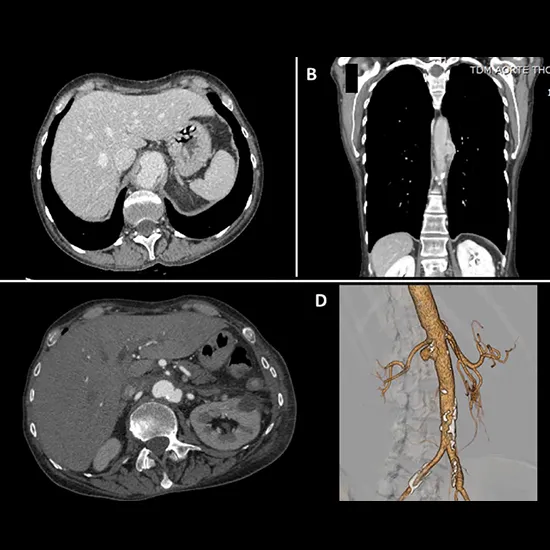
A CT Abdominal Aorta is an imaging procedure that examines your aortic vessels.
CT scans the body in cross-section, including the aorta, using X-rays. It can detect an aneurysm's size and shape. You typically lie on a table inside a doughnut-shaped X-ray machine during a CT scan. A dye (contrast) may be administered intravenously to help the arteries show up more clearly on the X-ray.
symptoms include
Back ache.
Cough.
Voice is weak and scratchy (hoarseness)
Breathing difficulty.
Pain or tenderness in the chest.
in pregnancy, iodine allergy, uncontrolled hypertension, kidney disease The CT Abdominal Aorta is not used.
Before the exam, don't drink or eat anything after midnight. You must bring all medical records and any medications you are taking. If you have diabetes, you must stop taking insulin under the supervision of a doctor before having this scan.
Doctors recommend this imaging procedure if you have: -
In this procedure, you must lie supine on the table with your arm on the side. An IV line is inserted in your arm, and dye is injected through the IV line (90-100ML) while the scan is being performed. It is possible that you will be asked to hold your breath for a few seconds.
After the scan, the IV line is removed from your arm. You should drink water after the procedure to help the contrast material leave your body faster.
The procedure is painless and quick. this procedure is generally well-tolerated, with most patients experiencing either mild pain or no pain during the procedure. There were no patients who experienced excruciating pain.
A CT Abdominal Aorta Test is typically performed in a hospital's radiology department or an outpatient imaging facility. So, for the best services and reliable results, schedule your test at Ganesh Diagnostic in Yamuna Vihar.